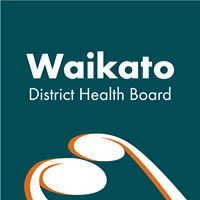Health warning for Lake Whangape
A new health
warning has been issued today for Lake Whangape, situated
north-west of Huntly. The lake has had a rise in the
cyanobacteria biovolume to 3.0mm3/L.
Biovolume is the measure used to decide when a health warning should be issued, with the cut-off value for a health warning set at 1.8mm3/L.
Lakes Waikare, Hakanoa and Lake Rotoroa (Hamilton Lake) continue to have a cyanobacterial health warning in force.
Lakes Waahi, and Ngaroto, the other lakes that are tested regularly, all currently remain below the warning level for cyanobacteria.
Testing is carried out by Waikato Regional Council monthly during the warmer months, and two monthly over the winter. The lakes which are tested may indicate, to some extent, cyanobacterial levels in other shallow lakes in the region.
Cyanobacteria are a form of algae which can produce toxins harmful to the health of humans and animals exposed to or swallowing the water where the algae are growing.
“During blooms, lakes should not be used for any activity that involves skin contact with the affected water. Swallowing water from lakes affected by blooms should also be avoided,” medical officer of health Dr Richard Wall said.
“Scums are a particular risk because they contain a high level of toxins. If contact with scum does occur, skin should be rinsed clean and clothing changed as soon as possible. This warning is particularly important for children.
“If people still choose to use the lakes when warnings are in place, or any other lake where there are visible changes to water colour, they should shower and change their clothing as soon as possible afterwards, even if no symptoms are noticeable,” he said.
Symptoms include rash, skin and eye irritation; allergy symptoms such as hayfever and asthma; and possibly stomach upsets including diarrhoea and vomiting.
These symptoms may not appear until some time after contact with the affected water. Long-term exposure to cyanobacterial toxins may cause additional health risks.
Waikato Regional Council no longer routinely tests Lake Kainui; however, caution is still advised for users of this lake because of its history of cyanobacterial blooms.
Waikato DHB’s Population Health service would like to be informed about health problems that develop after exposure to any of the Waikato lakes. Health advice is also available from Population Health on (07) 838 2569.
Up-to-date information on cyanobacterial cell counts is available from local councils and Waikato Regional Council.
ENDS



 Gordon Campbell: On More Threats To Democracy From David Seymour
Gordon Campbell: On More Threats To Democracy From David Seymour Auckland Transport: Thieves Endanger Public By Stealing Road Safety Fencing Worth $75k
Auckland Transport: Thieves Endanger Public By Stealing Road Safety Fencing Worth $75k WorkSafe NZ: Ecostore Commits $323k To ‘Cultural Shift’ In Safety
WorkSafe NZ: Ecostore Commits $323k To ‘Cultural Shift’ In Safety TECT: New Western Bay Of Plenty Heritage Navigation Tool In Development
TECT: New Western Bay Of Plenty Heritage Navigation Tool In Development Wellington City Council: 'I Am Focused On Continuing The Momentum' – Mayor Tory Whanau
Wellington City Council: 'I Am Focused On Continuing The Momentum' – Mayor Tory Whanau Love Food Hate Waste: From Overbuying To Overcooking - Food Waste Challenges Impacting Smaller Households
Love Food Hate Waste: From Overbuying To Overcooking - Food Waste Challenges Impacting Smaller Households NZ Government: Strong Biosecurity More Important Than Ever
NZ Government: Strong Biosecurity More Important Than Ever


